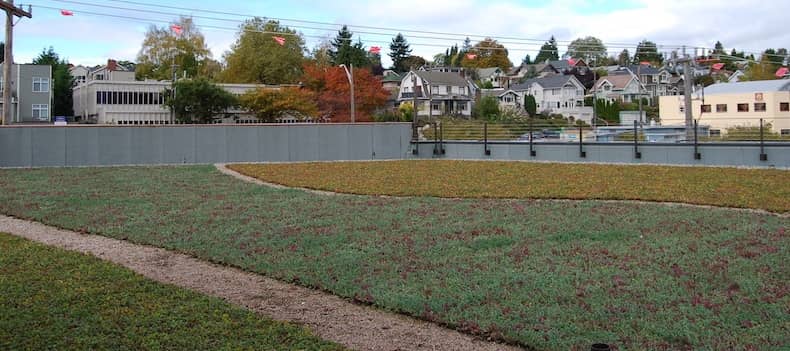Why Green?
Going green has been a popular trend throughout the construction world in school systems, healthcare facilities and even the automobile industry. However, a more recent overarching movement that has made its way over from Europe is green or planted roofs. Besides the sustainability and environmental advantages of this roofing system, its design aids in water retention efforts, especially in older cities, by preventing runoff from infiltrating a sewer system at a dangerous rate and increasing overflow.
Installation Procedures
Resistance to outside factors is key throughout the green roof installation process. And being able to resist punctures and chemicals is critical to a successful green roof application. Although the membrane is buried, chemicals can still reach the material if it's not resistant enough. When it comes to ponding water, the essential duties of a green roof are activated. Instead of draining water from the roof, water percolates through the assembly and is used to support the plant life. Similar to most roofing installations, correctly installing the roof on the first attempt is critical to future maintenance and performance.
Structure
Each layer of a green roof is responsible for creating a sustainable barrier of resistance. The following list represents each material contained within a typical green roof membrane:
| Plant Life Layer |
| Growth Medium Layer |
| Drainage Layer |
| Membrane Layer |
| Insulation Layer |
| Structural Roofing Layer (steel, concrete, wood) |
Where Can Green Roofs Be Used?
Generally, any low slope roof that can support the weight is suitable for a green roof installation. However, there is much debate over this topic from consultants and architects, many of whom prefer the roofing system be constructed on a concrete structural substrate. As green roof systems become increasingly popular, the processes around evaluating and testing them is continuing to evolve in the U.S. market. Overall, there are no absolute standards or criteria that are specifically suitable for a green roof installation. The German FLL standard is often used as a default standard.
Disadvantages
Despite the numerous benefits of a green roofing system, it's just as important to understand the not-so-apparent disadvantages of such an application. When it comes to repairs, it's not as simple to repair a green roof layer in comparison to a regular roofing membrane. Industry drivers understand this disadvantage, but green roof proponents push the notion that the various benefits outweigh it.
Why FiberTite?
As a producer of XR5 landfill and water containment membranes, the FiberTite brand has history and foundational experience with green roofing. FiberTite material is known for its chemical and puncture-resistant membrane, universal application purposes and LEED certification, making it an extremely accommodating material for green roof applications.
The recent push for environmental sustainability in the marketplace, especially in the education and healthcare industries, also furthers the green roof movement. When deciding on the type of roofing system you need for your next project, consider the structural strengths and weaknesses, installation processes and eligible applications for a green roofing system.
-1.png?width=500&height=271&name=FiberTite_Only%20(500px%20wide)-1.png)



-1.png)